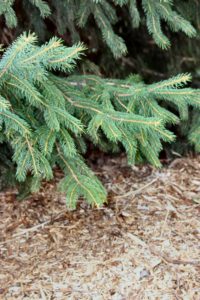DIY Lawn Essentials
Sigh, it’s finally spring. Green grass is poking through the dried remains of last year, trees are sprouting their buds, and dandelions are once again making their unwelcome appearance. The first signs of the approaching warm weather are upon us.
Do-it-yourself spring clean-up can be a breeze if you create a plan of attack. A little elbow grease right now can make for a nicer looking lawn and easier maintenance in the future.
Dethatch
Spring is the perfect time for dethatching your lawn. The removal of accumulated thatch allows water and fertilizer to penetrate the grass root. This time of year, turf is actively growing and can quickly recover from “injury.”
For smaller yards, use a thatching rake. The thick blades of this type of rake dig into turf and loosen thatch layers. For large areas of grass, use a vertical (dethatcher) mower to cut through the soil’s surface. Make two passes over the lawn – with the second pass at an angle perpendicular to the first. Remove debris with a rake and dispose of it.
Dethatching can be follow-up by aeration, overseeding thin areas, fertilizing, and watering.
Weed Control
Prevent weed seeds from germinating by using pre-emergent weed control. Apply pre-emergence herbicides after dethatching to avoid the herbicide from binding to thatch and decreasing effectiveness. Pre-emergent herbicides work for about three months, so plan on a second application during the summer.
Cut Back Old Perennial Growth
Flowering perennials should be pruned to 4–5 inches and prune 2–3 inches for ornamental grasses. Dig up those perennials, such as daylilies and hostas, to thin crowded beds. Divide them, leaving at least three stems per clump, and transplant to sparse areas. Keep the young green canes of climbing plants and remove woody ones. Bend canes horizontally and tip buds downward. Use twine or Velcro fasteners to hold canes in place.
Clean Around Plants
Fallen leaves and dead foliage smother plants and foster disease. Remove debris and dead annuals, and pull any weeds. Spread pelletized fertilizer on the soil’s surface so that spring rains can carry it to the roots. Add a 5-10-10 fertilizer around bulbs as soon as they flower to maximize bloom time and feed next season’s growth.
Spend Time on Mulch
There’s nothing nicer to look at than fresh mulch. Mulch not only enhances beauty, it locks in moisture, keeps out weeds, moderates soil temperatures, and nourishes soil. We recommend that you first turnover and fluff existing landscape mulch. Follow up with a topdress to ensure a 3-4 inch layer. Lastly, sprinkle on a granular slow release weed preventer.
If this sounds like too much work – no worries! The staff of McDonough Landscaping will take care of all your outdoor needs. Appointment times are booking quickly, so call us today and reserve a landscaping consultation date. 651.755.7901